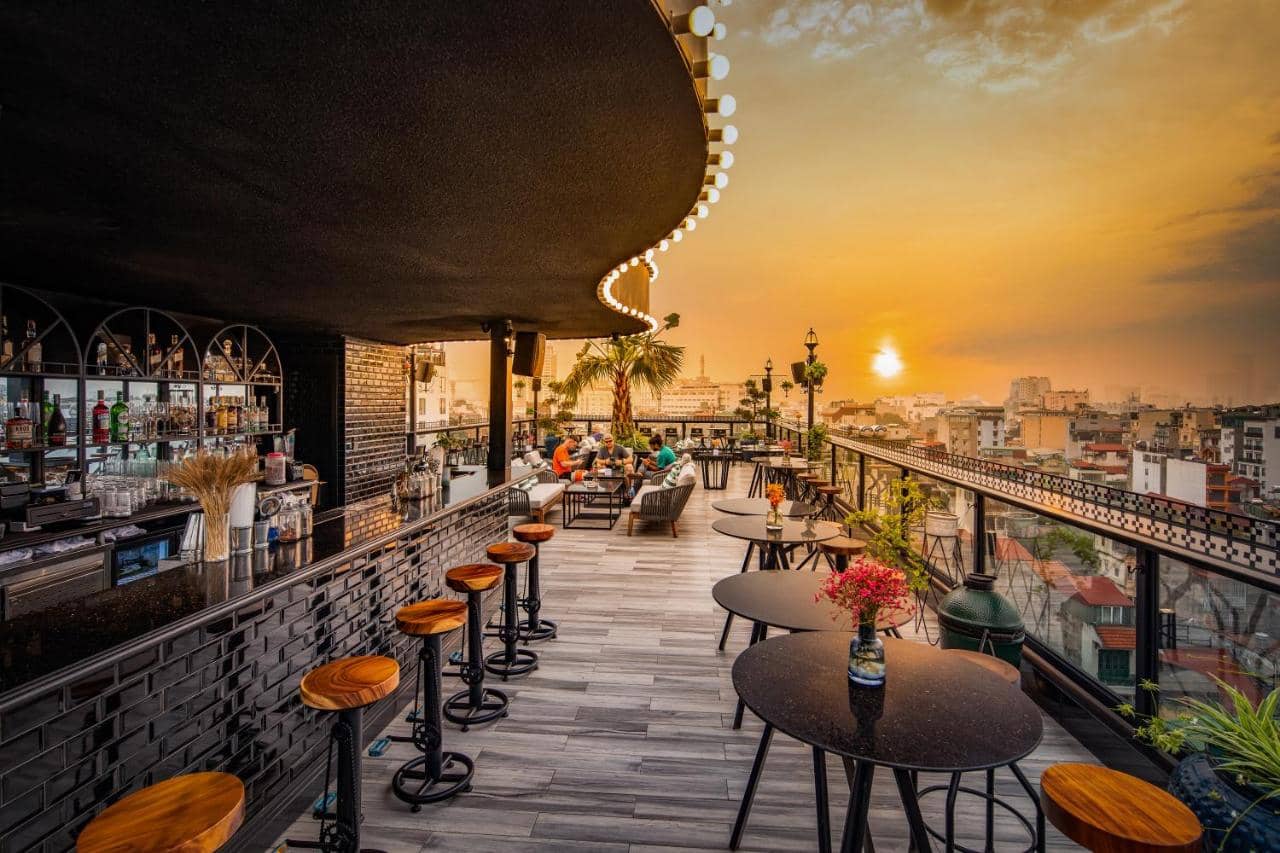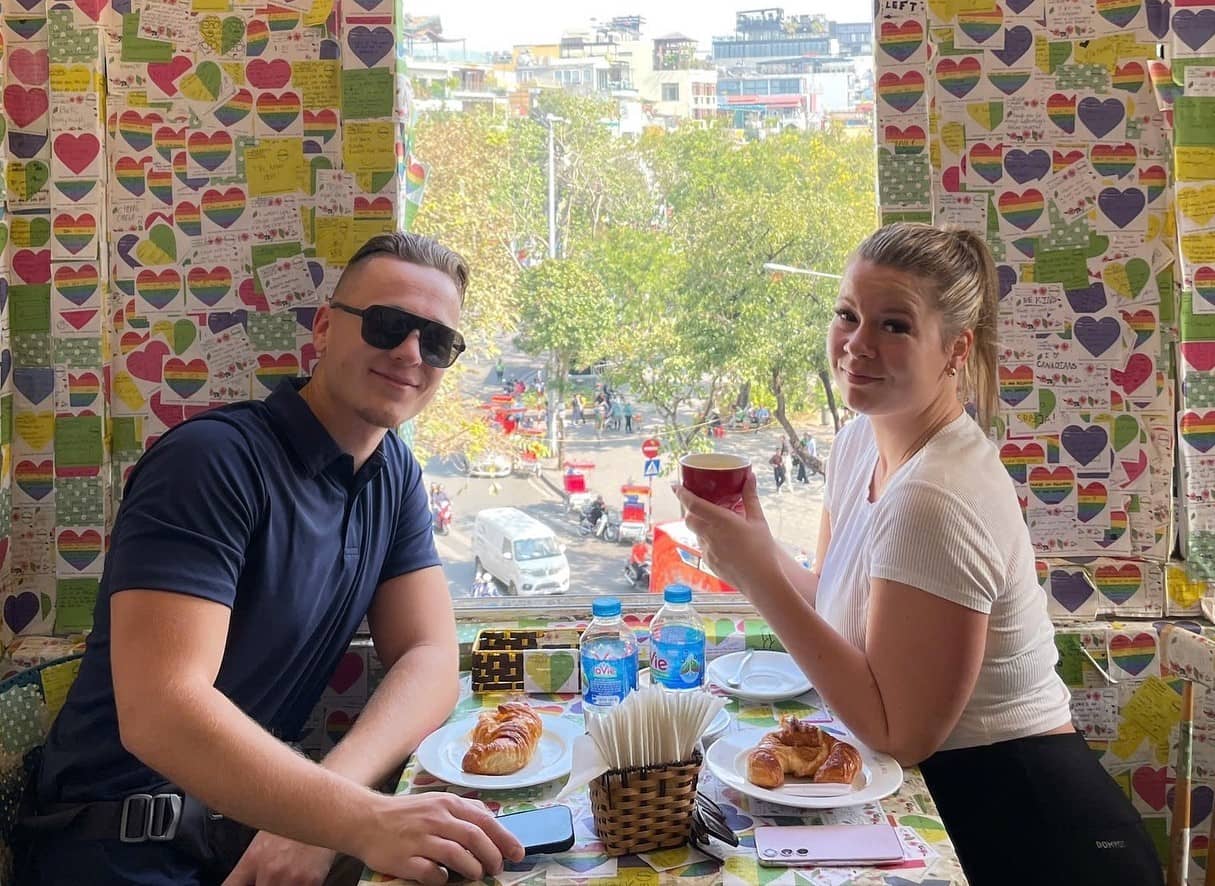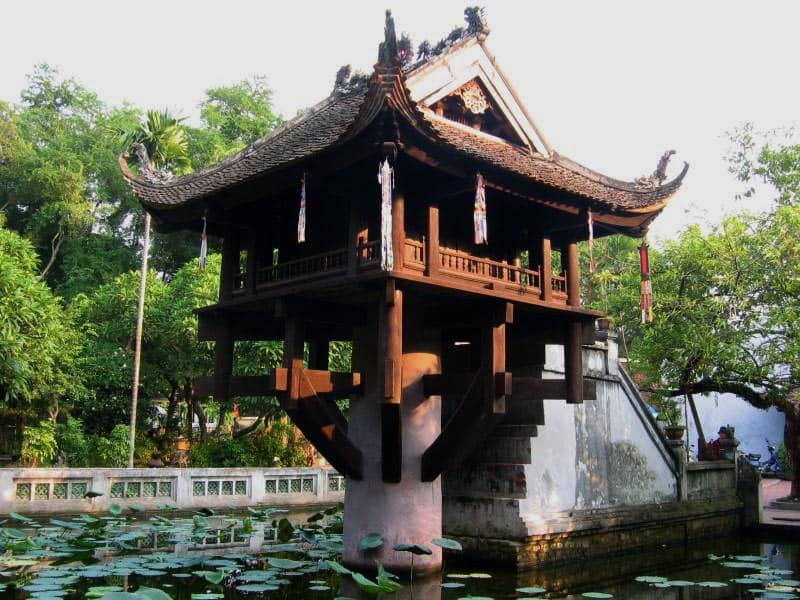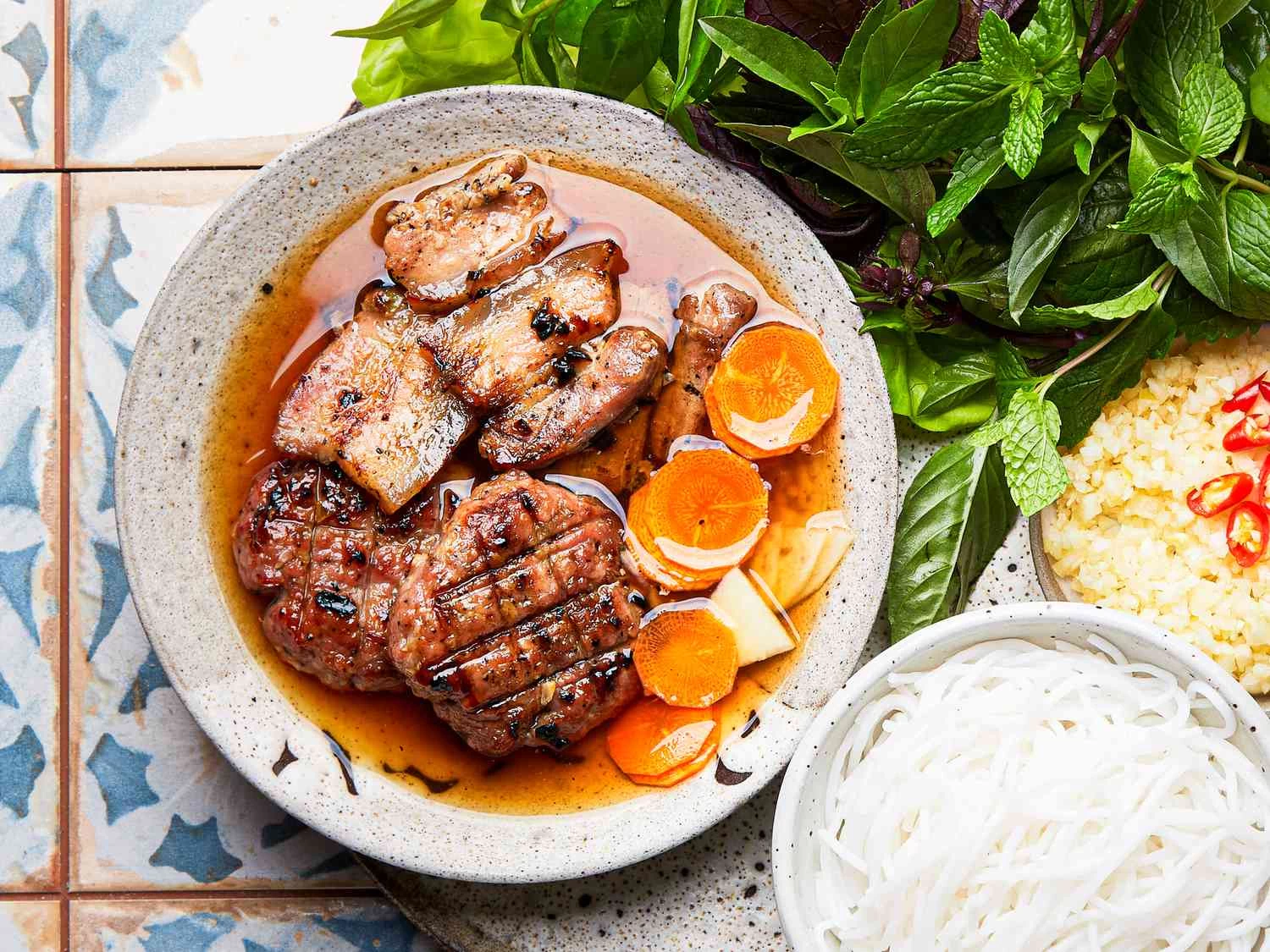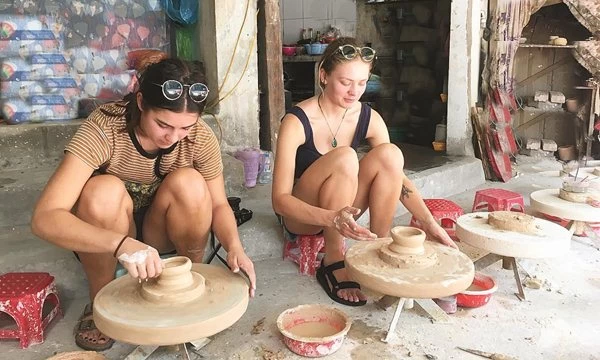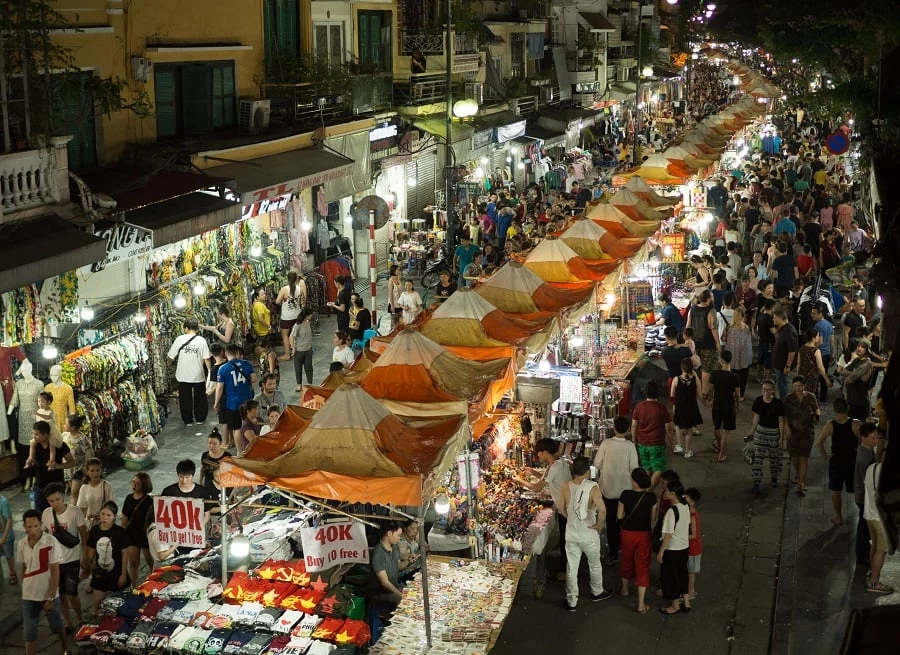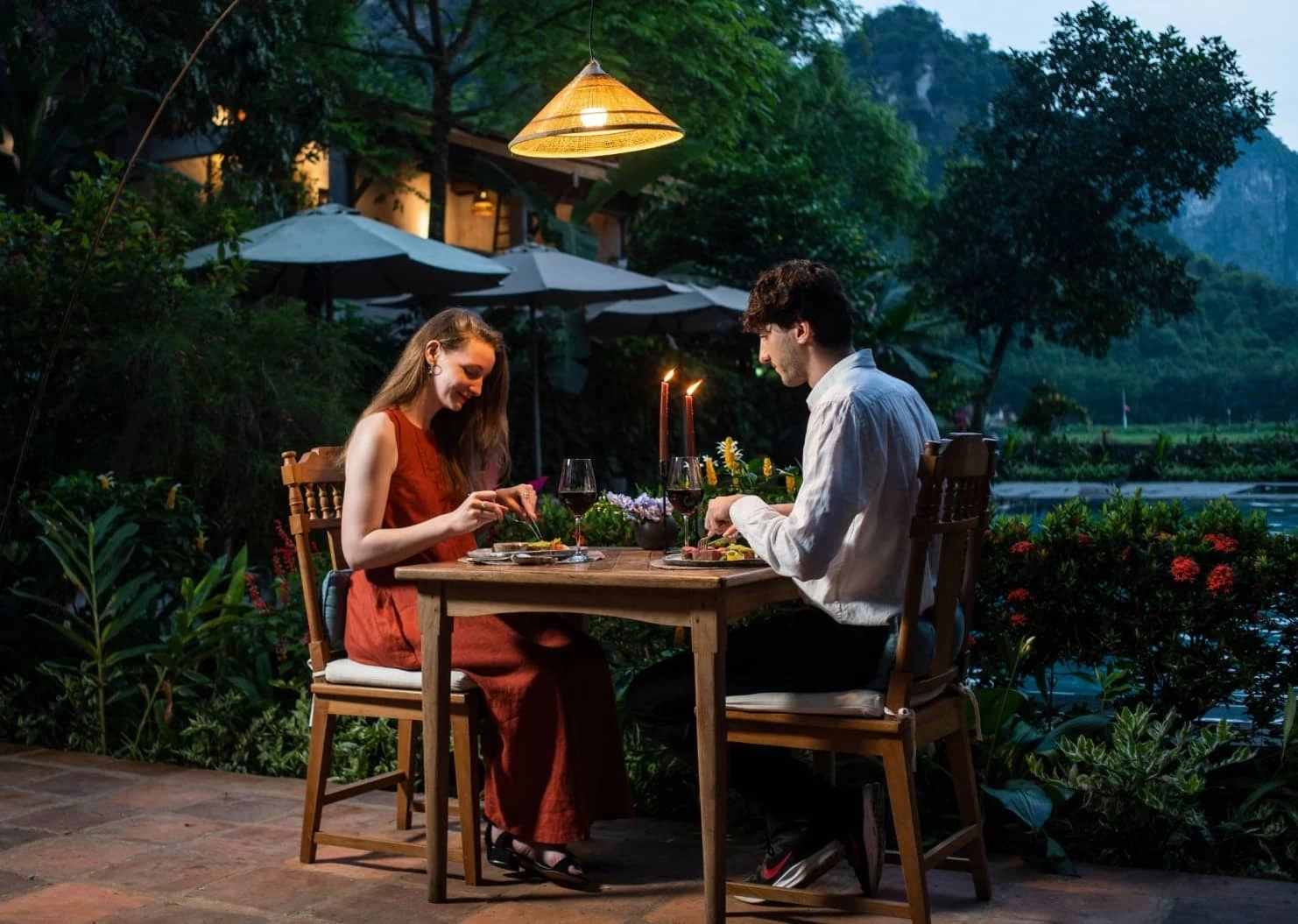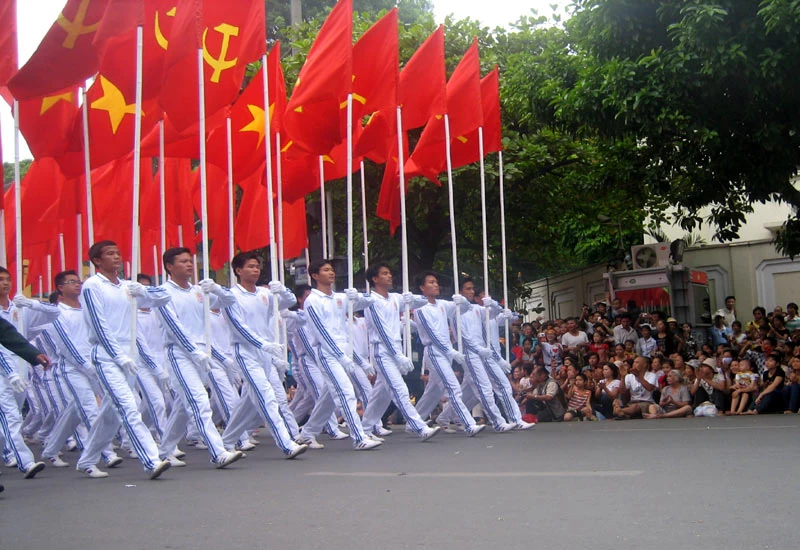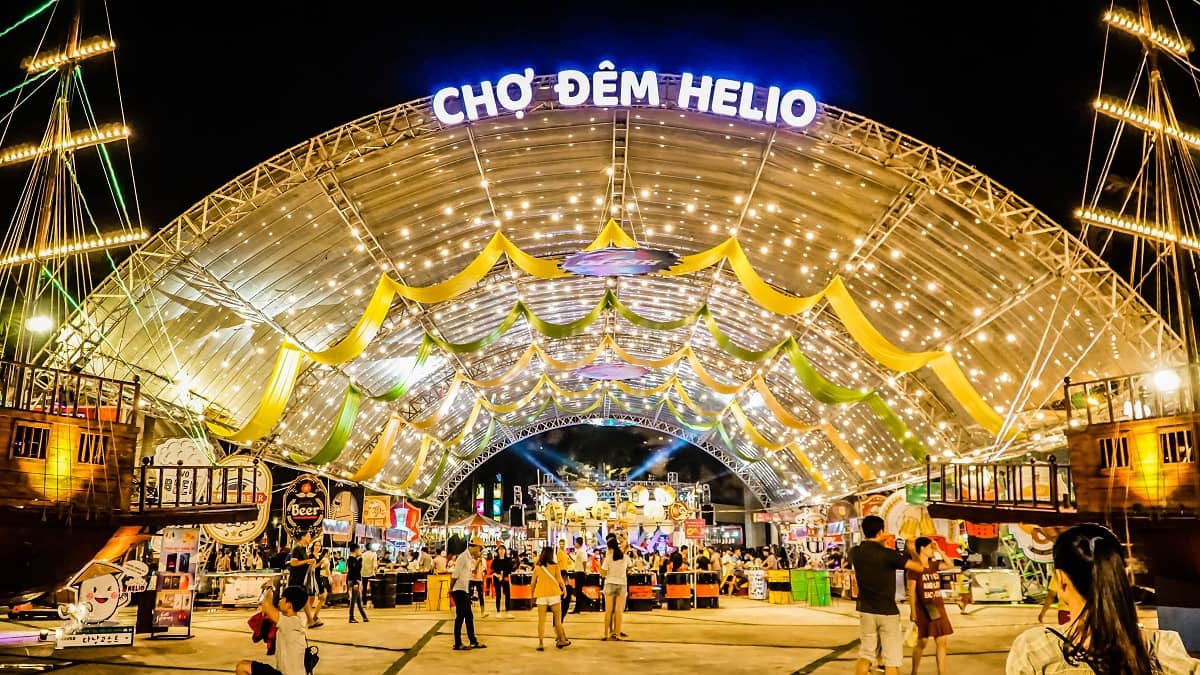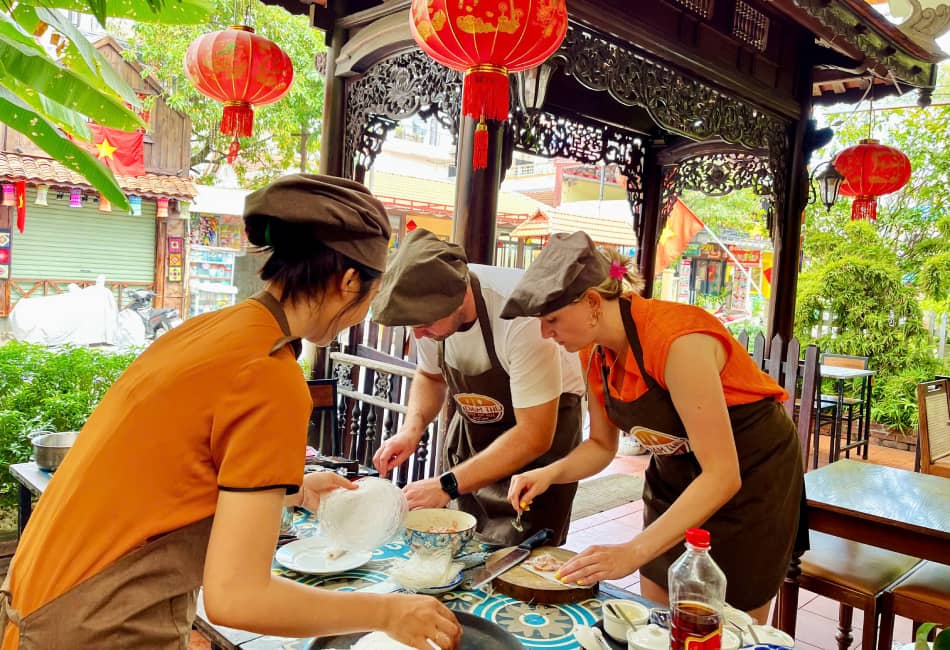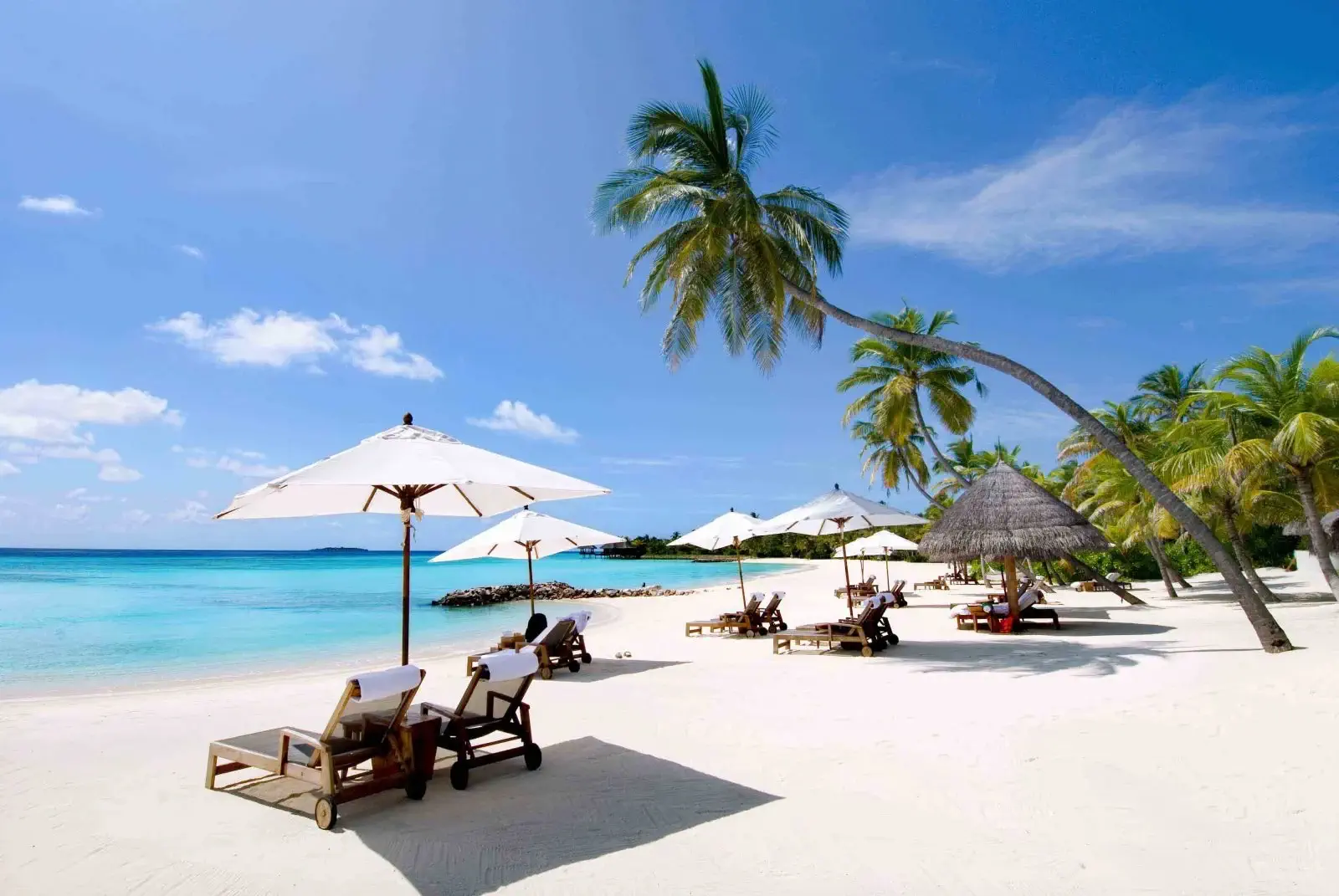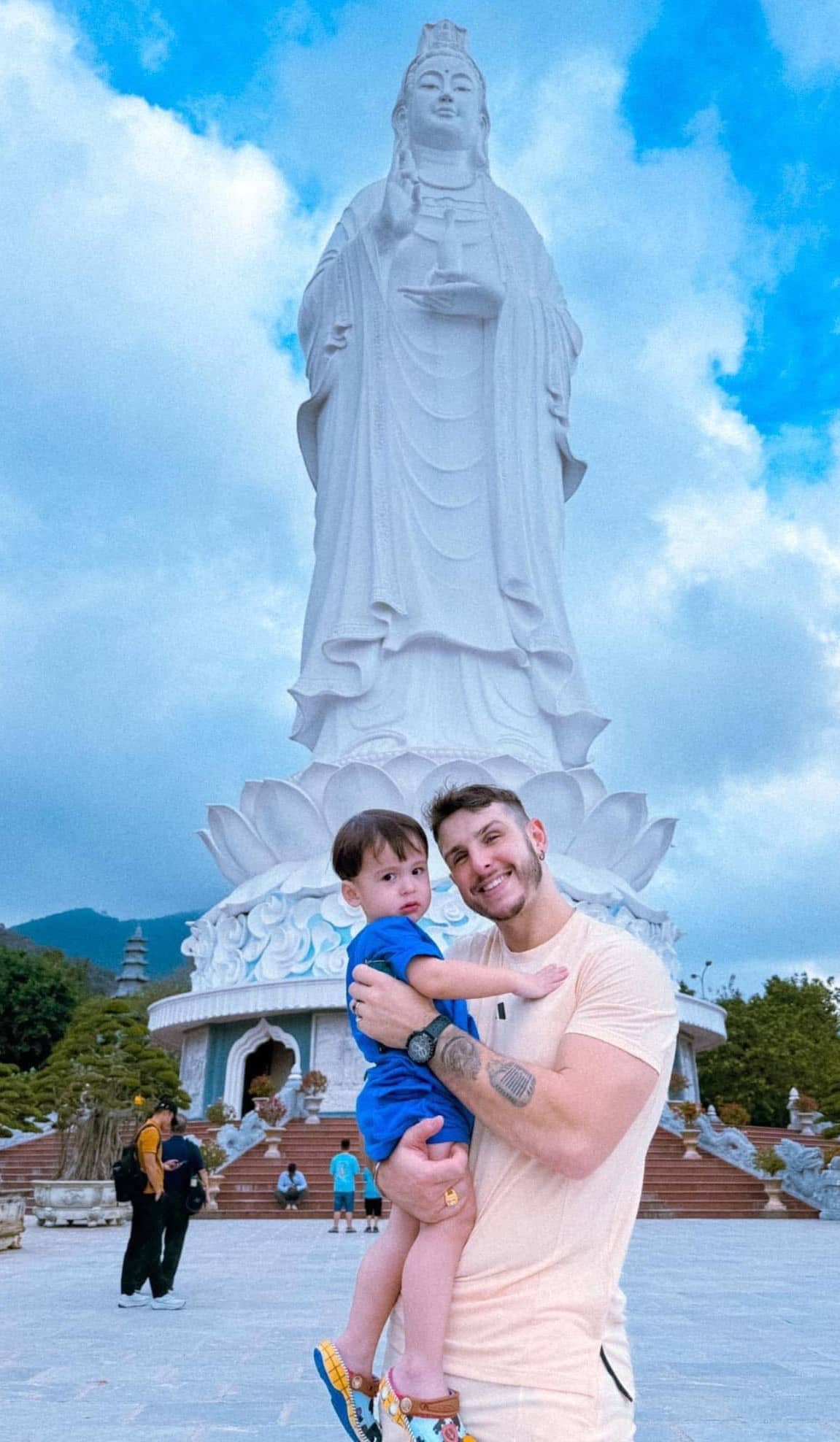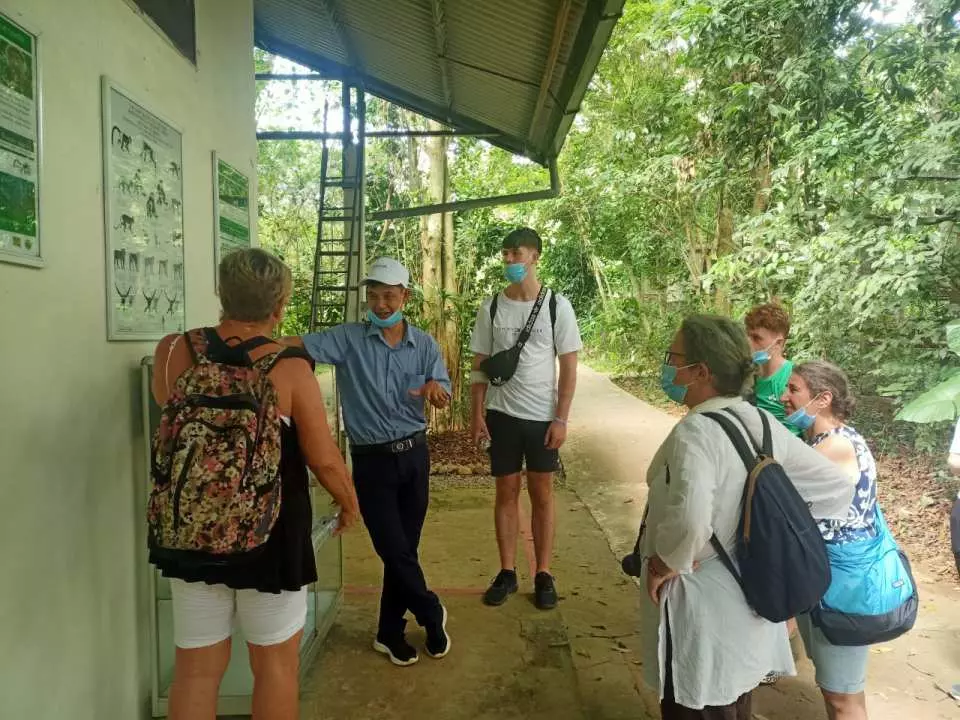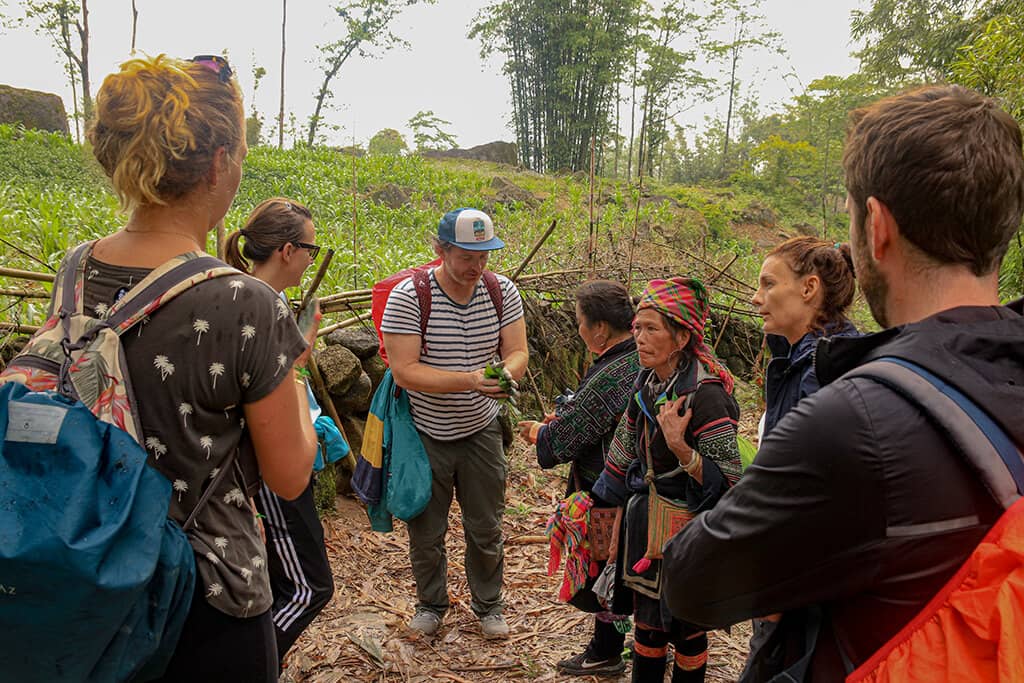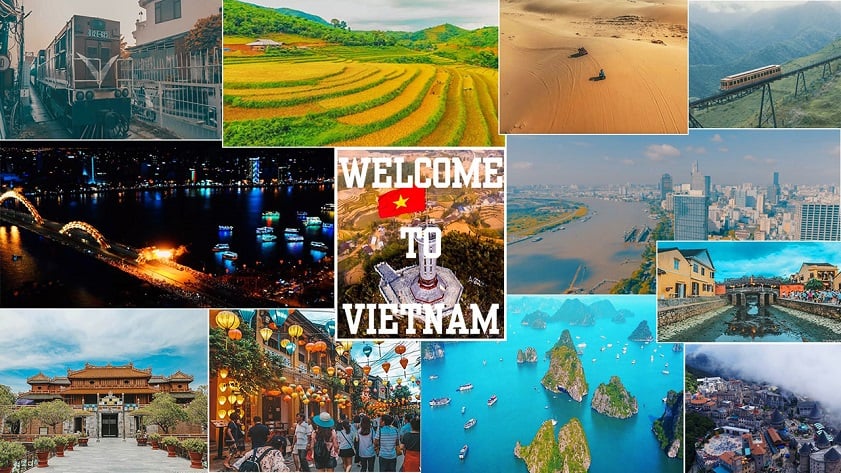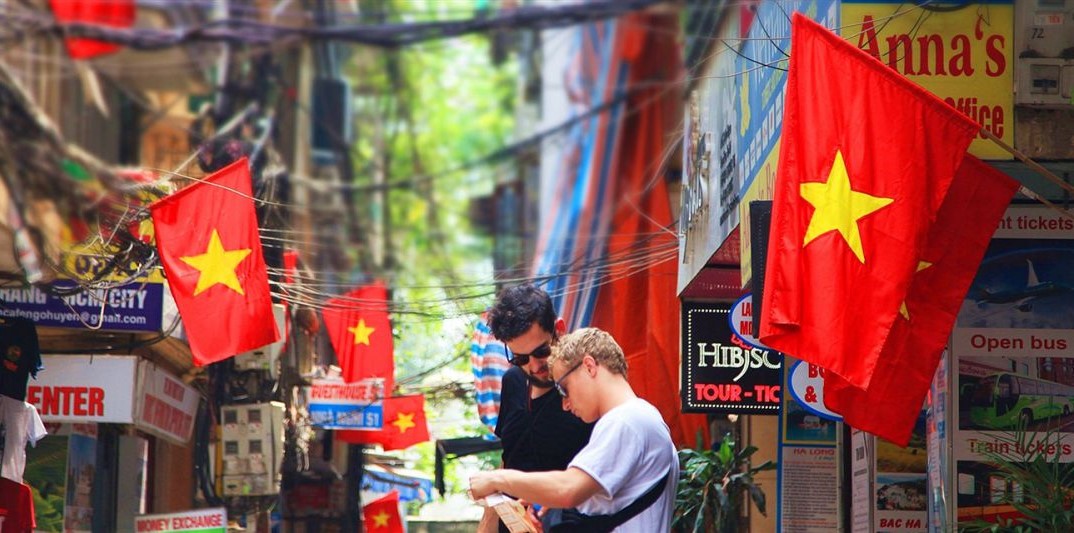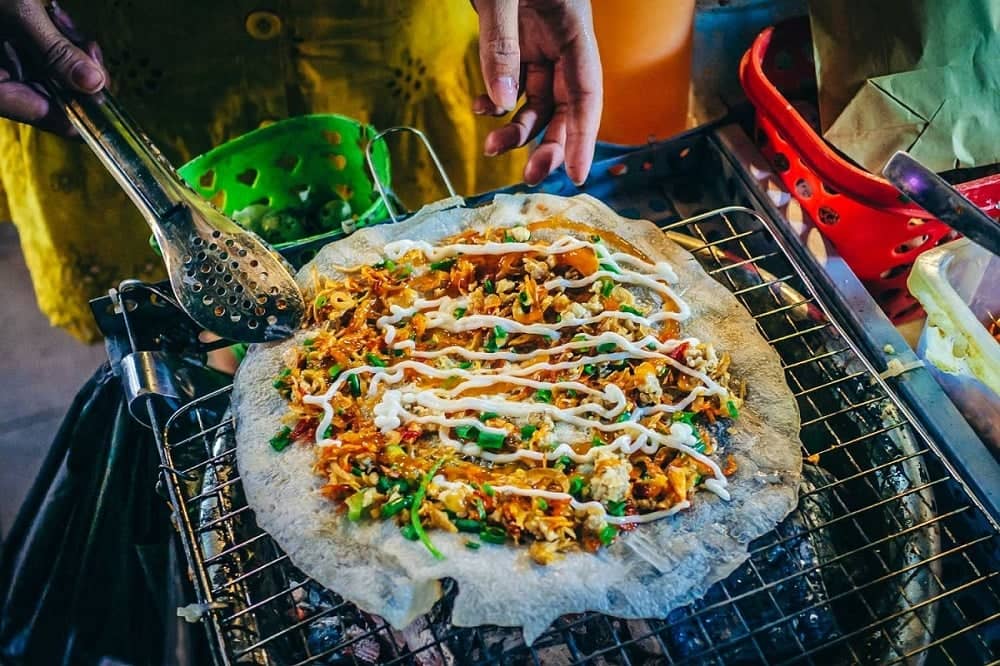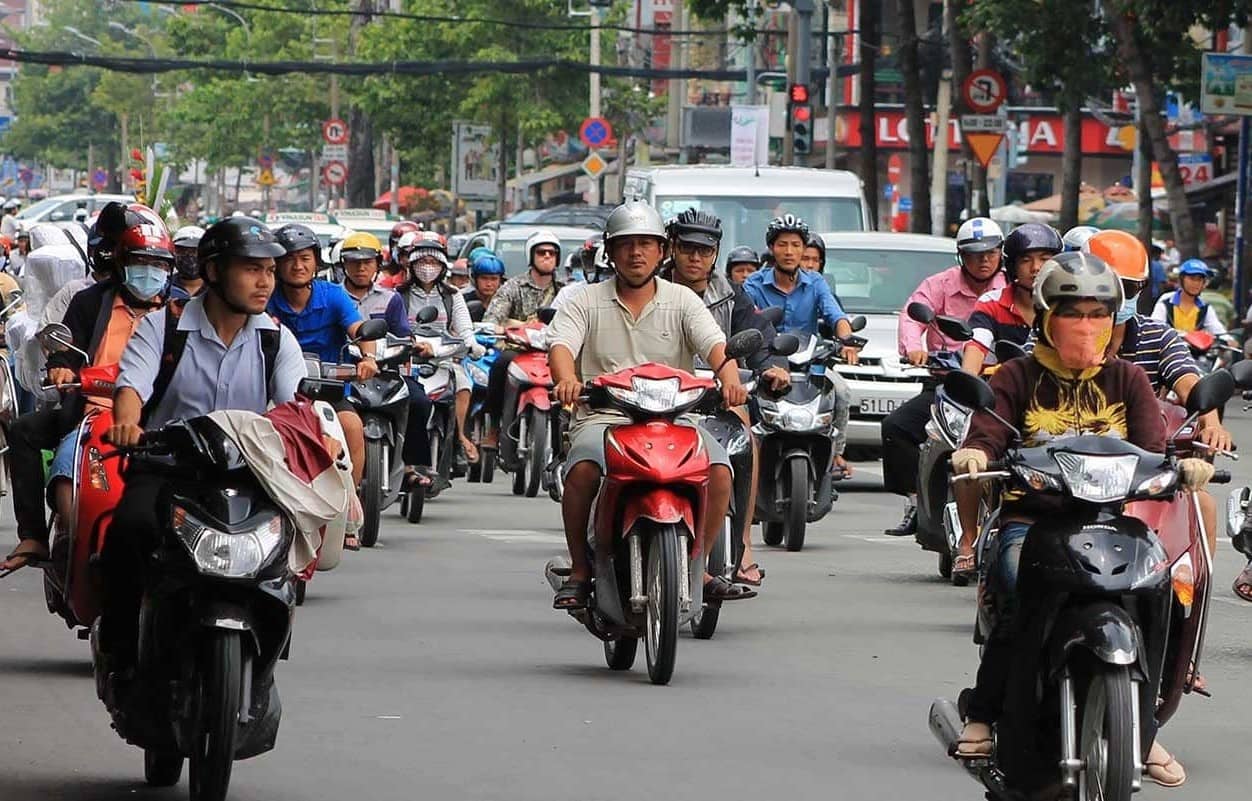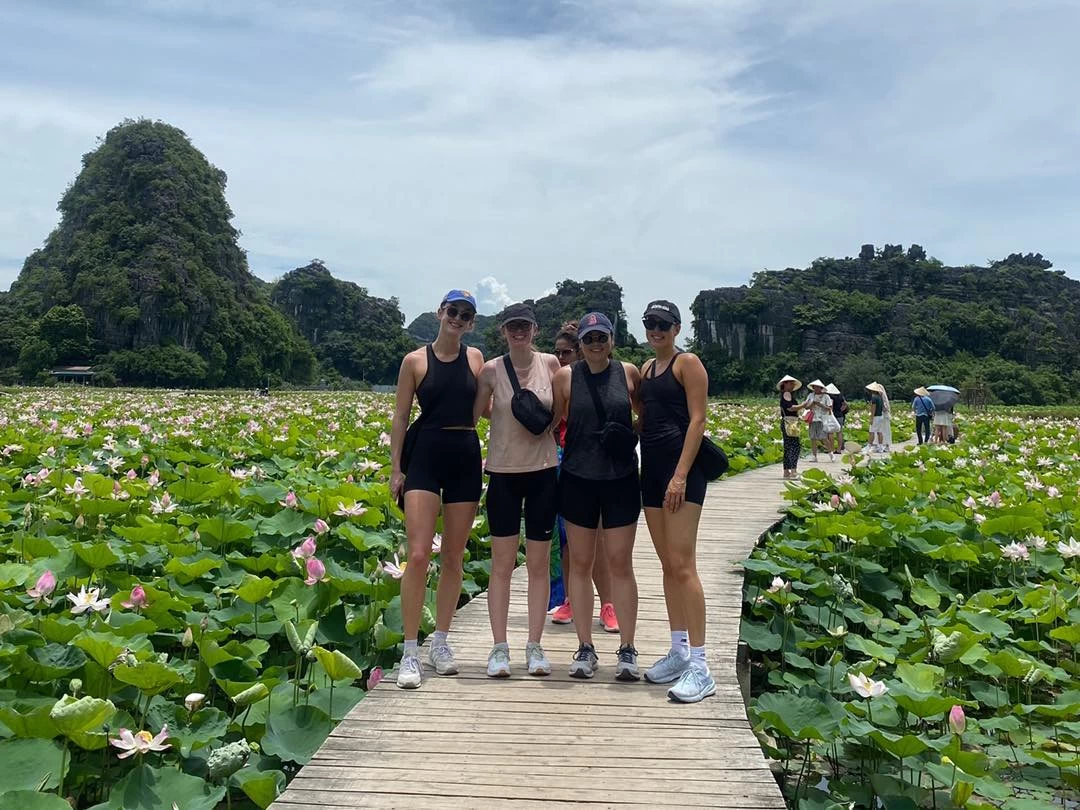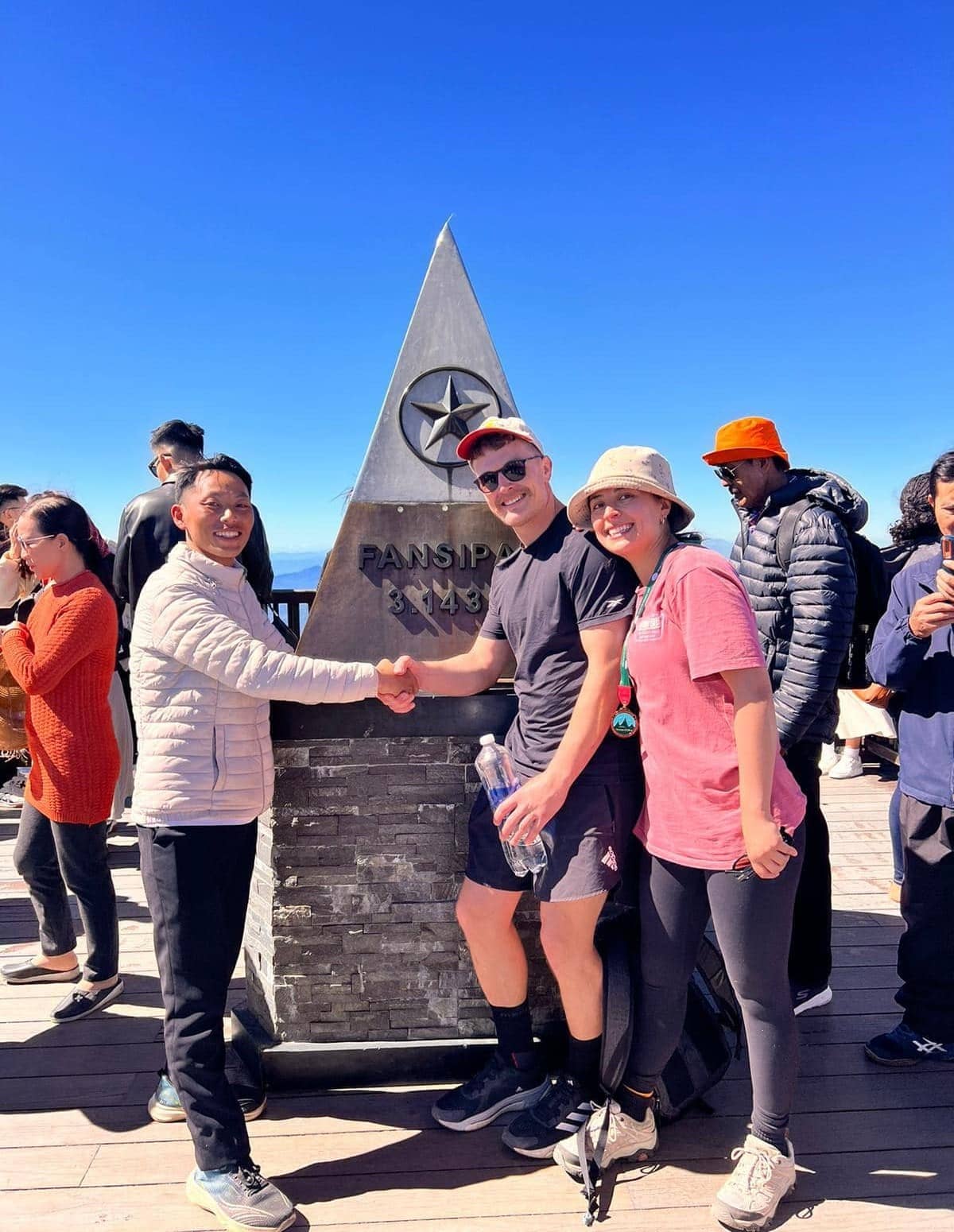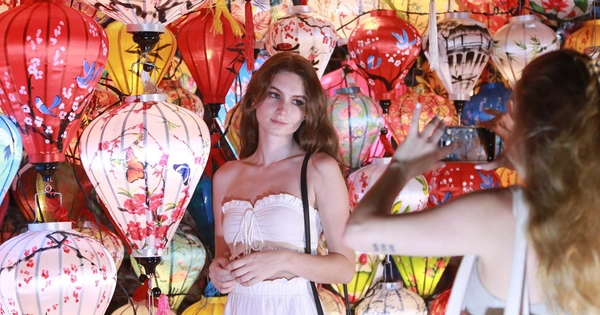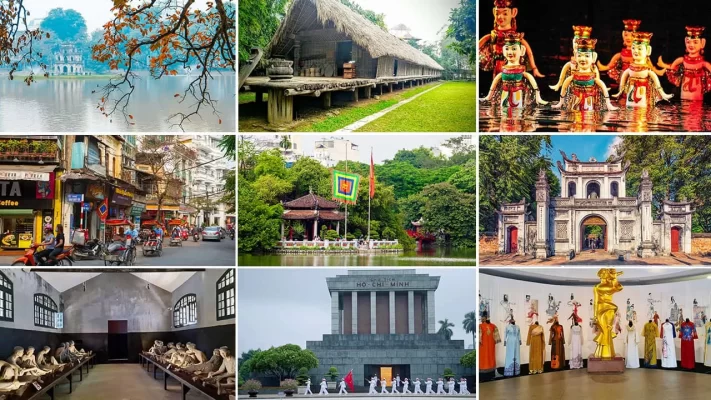
Things to do in Hanoi
Discover the best things to do in Hanoi with our comprehensive guide for international tourists. Explore historical landmarks like Hoan Kiem Lake and the Temple of Literature, indulge in street food tours, enjoy water puppet shows, and plan day trips to Ha Long Bay and Ninh Binh. Find out about cultural experiences, nightlife hotspots, and essential travel tips to make the most of your visit to Vietnam’s captivating capital city.
I. Introduction to Hanoi
1. Overview of Hanoi
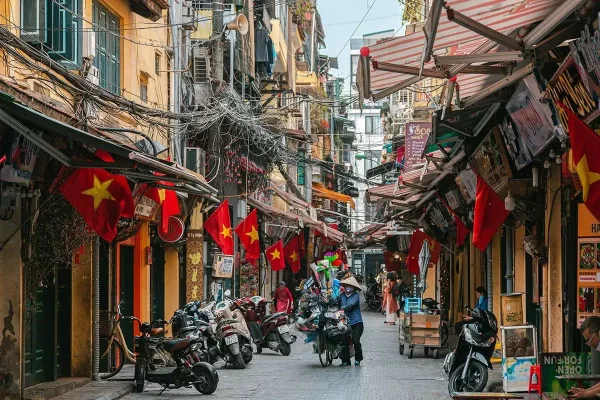
Ancient features of Hanoi
Hanoi, with a history spanning over a thousand years, offers a rich tapestry of cultural and historical landmarks that reflect its storied past.
From the bustling streets of the Old Quarter, where ancient architecture stands tall amidst modern shops, to the serene beauty of Hoan Kiem Lake, Hanoi is a city that captivates the hearts of all who visit. Its vibrant culture is showcased through traditional water puppet shows, bustling markets, and the tantalizing aromas of street food that waft through the air.
2. Hanoi for International Tourists
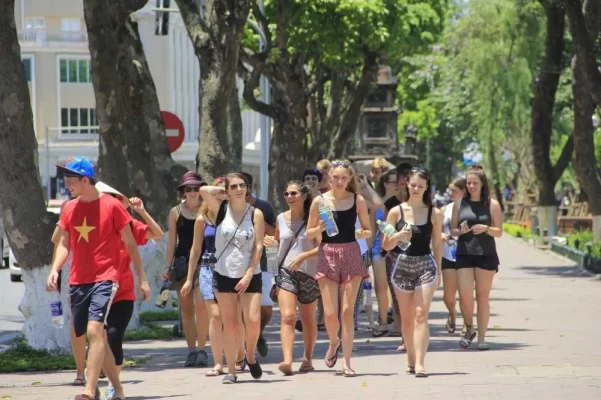
Hanoi is loved for its rustic beauty and diverse cultural colors
For international tourists, Hanoi presents an unparalleled travel experience. It is a city where every corner tells a story, where history and tradition are woven into the fabric of everyday life.
Whether you’re a history buff eager to explore ancient temples and colonial architecture, a foodie ready to dive into a culinary adventure, or an adventurer looking to uncover the city’s hidden gems, Hanoi has something for everyone. The city’s unique charm and authenticity make it a must-visit destination that offers a glimpse into the soul of Vietnam.
II. Historical And Cultural Attractions
1. Hoan Kiem Lake and Ngoc Son Temple
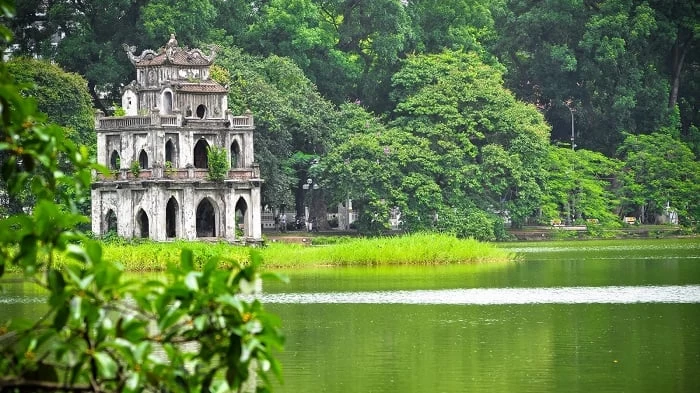
Hoan Kiem Lake
Hoan Kiem Lake, also known as Sword Lake, is located in the heart of Hanoi and is deeply entwined with Vietnamese legend and history. According to the tale, the emperor was given a magical sword by the gods, which he used to drive out the invading Chinese forces. After his victory, a giant golden turtle surfaced in the lake and reclaimed the sword, symbolizing the gods’ will for peace.
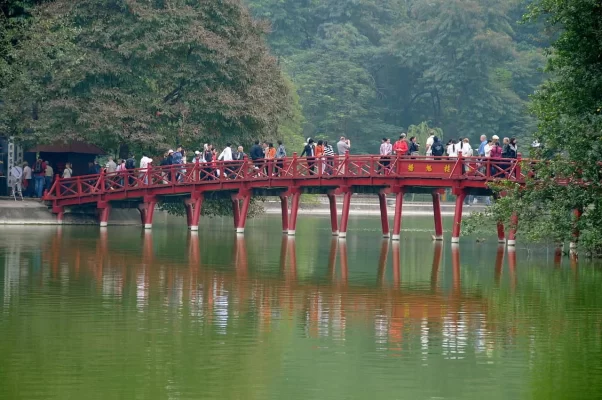
The Huc Bridge leads to Ngoc Son Temple
Ngoc Son Temple, located on a small island in the northern part of the lake, is one of Hanoi’s most iconic cultural sites. The temple is dedicated to General Tran Hung Dao, who defeated the Mongols in the 13th century, as well as other cultural figures and deities.
The temple’s architecture is a blend of traditional Vietnamese and Chinese styles, featuring a beautiful red wooden bridge, the The Huc Bridge, which connects the temple to the lake’s shore.
Click here: Hanoi Day Trip
2. Ho Chi Minh Mausoleum
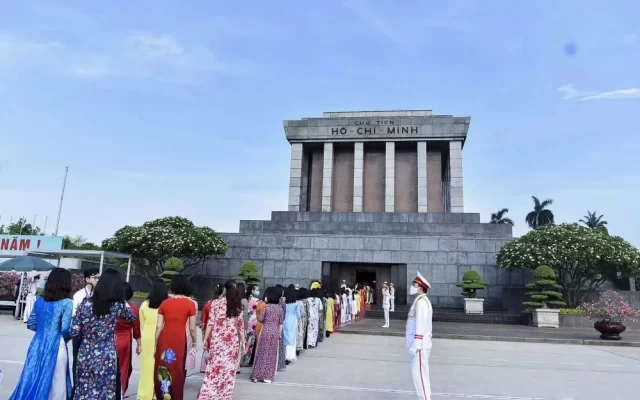
Ho Chi Minh Mausoleum
The Ho Chi Minh Mausoleum is one of Hanoi’s most significant historical and cultural landmarks, drawing numerous visitors each year who wish to pay their respects to the revered leader.
Ho Chi Minh, often referred to as “Uncle Ho,” is a pivotal figure in Vietnamese history. He was the founding father of the Democratic Republic of Vietnam (North Vietnam) and served as its president from 1945 until his death in 1969.
Visiting Hours:
- The mausoleum is open to the public in the mornings, typically from 7:30 a.m. to 10:30 a.m.
- It is closed on Mondays and Fridays.
- The mausoleum is also closed for a few months each year (usually from September to November) for maintenance, so it’s advisable to check for any closures before planning your visit.
Tips for Visiting:
- Dress Code: Visitors are required to dress respectfully. This means no shorts, sleeveless shirts, or revealing clothing. Long pants and long-sleeved shirts are recommended.
- Behavior: Inside the mausoleum, visitors must maintain silence and behave respectfully. Photography and filming are strictly prohibited.
- Security: Bags, cameras, and other personal items are not allowed inside the mausoleum. There are storage facilities where you can leave your belongings before entering.
3. Temple of Literature
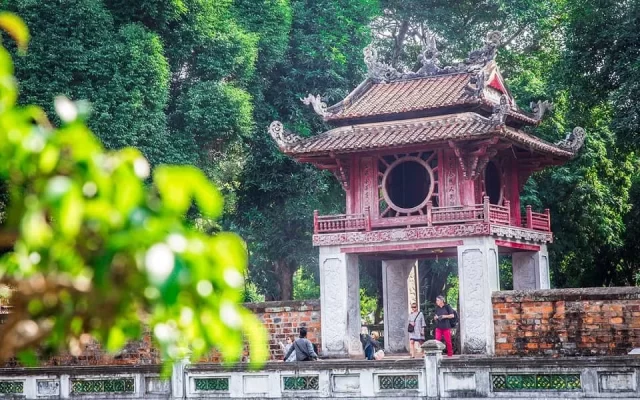
Temple of Literature- Vietnam’s first university
The Temple of Literature is not only a symbol of Hanoi’s cultural heritage but also Vietnam’s first national university, established in 1070. Originally dedicated to Confucius, this site was later transformed into a university for the country’s elites.
The Temple of Literature stands as a testament to the importance of education and intellectual pursuit in Vietnamese culture. Visitors can explore its serene gardens and ancient structures and gain insight into the rich history of Vietnamese academia.
4. Hanoi Old Quarter
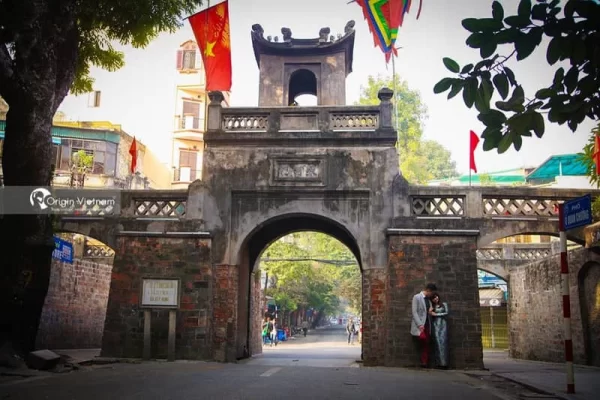
Hanoi Old Quarter
The Hanoi Old Quarter is the beating heart of the city’s historical and cultural life. This area, with its labyrinth of 36 streets, has been the commercial hub of Hanoi for centuries. Each street, historically named after the goods sold there, still retains a unique charm and character.
Local Markets:
- Dong Xuan Marketis the largest indoor market in Hanoi, offering everything from fresh produce to clothing and souvenirs. It’s a vibrant place to experience the local way of life.
- Hang Be Market: A traditional wet market where locals shop for daily necessities. It’s a great spot for photographers and those interested in local culture.
Street Food Stalls:
- Ta Hien Street: Often referred to as “Beer Street,” this area is famous for its bustling nightlife, with numerous street food stalls and bars. Try local favorites like Bia Hoi (fresh beer) and Nem Ran (spring rolls).
- Hang Buom Streetis known for its wide variety of street food, from savory Pho (noodle soup) to sweet desserts like Che (Vietnamese sweet soup).
- Ma May Street: This street offers a mix of traditional and modern Hanoi cuisine. Don’t miss out on Bun Cha (grilled pork with noodles) and Banh Mi (a Vietnamese sandwich).
Historic Sites and Temples:
- Bach Ma Temple: One of the oldest temples in Hanoi, dedicated to a white horse that, according to legend, guided the city’s construction.
- Heritage House on Ma May Street: A well-preserved example of a traditional Vietnamese house, offering a glimpse into the daily life of Hanoians in the past.
Shopping Streets:
- Hang Gai Street (Silk Street): Renowned for high-quality silk products, from scarves to tailored garments. It’s a perfect place to buy souvenirs and gifts.
- Hang Bac Street (Silver Street) is known for its jewelry shops, offering intricate silver and gold pieces crafted by skilled artisans.
III. Visiting Famous Museums
1. Vietnam Museum of Ethnology
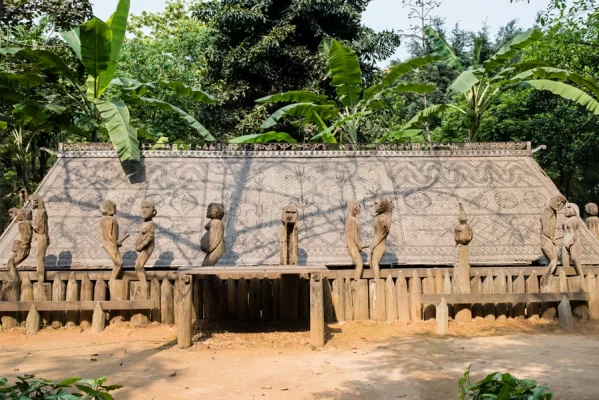
Vietnam Museum of Ethnology
The Vietnam Museum of Ethnology is a vital cultural institution that showcases the diverse cultural heritage of Vietnam’s 54 ethnic groups. Located in the Cau Giay District of Hanoi, the museum spans an area of nearly 3 hectares and offers a comprehensive look into the traditional and contemporary lives of these ethnic communities.
Indoor Exhibition Area:
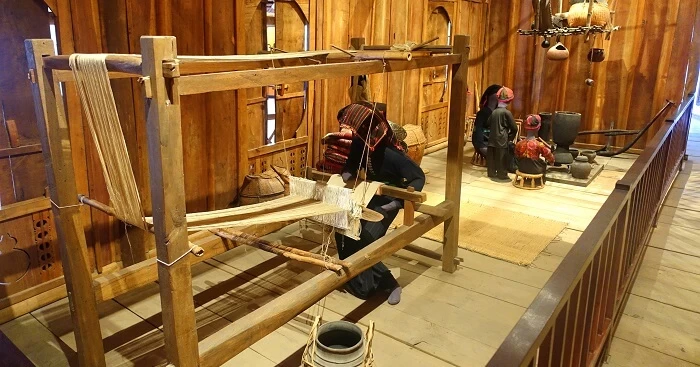
Traditional fabric weaving of Vietnam
- The indoor space features a variety of artifacts, including traditional clothing, agricultural tools, musical instruments, and everyday household items.
- Detailed dioramas and models depict the traditional houses, villages, and lifestyles of various ethnic groups, providing visitors with a visual understanding of their living conditions and social structures.
Outdoor Exhibition Area:
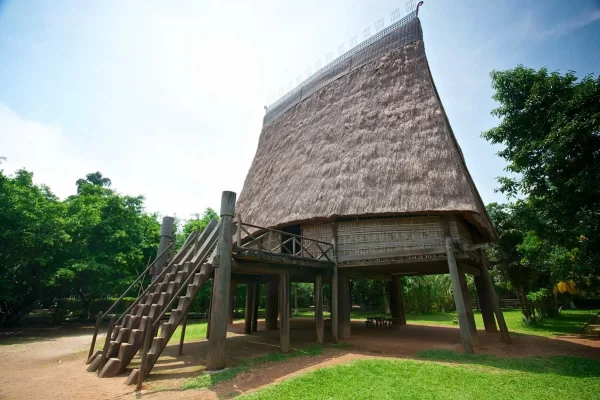
The common house of the ethnic community
- The outdoor area is designed as an ethnographic park, showcasing life-size replicas of traditional houses from different ethnic groups. These include stilt houses, communal houses, and longhouses.
- Visitors can explore these structures and gain insight into the architectural styles, construction methods, and cultural significance of each house type.
Opening Hours:
- Tuesday to Sunday: 8:30 a.m.–5:30 p.m.
- Closed on Mondays and during the Vietnamese New Year (Tet) holidays.
Admission Fees:
- Adults: VND 40,000.
- Students: VND 15,000 (with a valid ID).
- Children under 6: Free.
2. Vietnamese Women’s Museum
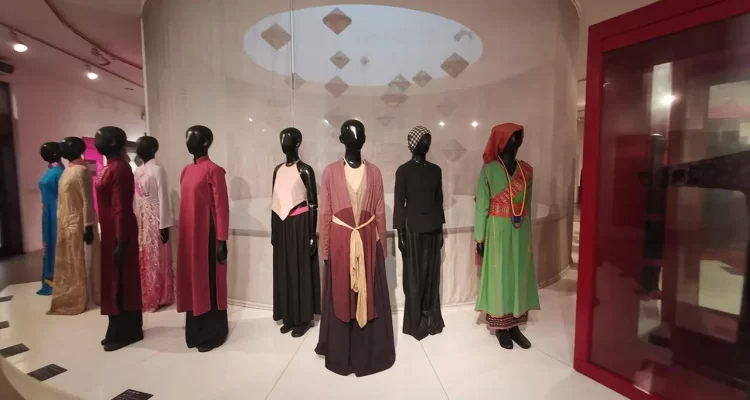
Vietnamese Women’s Museum
The Vietnamese Women’s Museum in Hanoi is a must-visit for anyone interested in understanding the rich history and significant contributions of women in Vietnamese society.
The museum’s exhibits are organized into three main themes: women in family, women in history, and women’s fashion. Each section offers deep cultural insights and showcases the pivotal roles women have played throughout Vietnamese history.
- Women in Family: This section highlights the various roles of women in traditional and modern Vietnamese families. It includes displays on marriage customs, childbirth, and the importance of women in maintaining family harmony and traditions.
- Women in History: This section celebrates the contributions of women to Vietnam’s national history, focusing on heroines of the past who fought for the country’s independence and modern women who have made significant impacts in various fields. Personal stories, photographs, and artifacts help bring these historical narratives to life.
- Women’s Fashion: Here, visitors can explore the evolution of women’s clothing in Vietnam, from traditional ao dai and ethnic minority costumes to contemporary fashion. The displays highlight the intricate craftsmanship and cultural significance behind these garments.
Do not miss: Top 5 Must-See Museums in Hanoi
III. Unique Experiences in Hanoi
1. Water Puppet Show
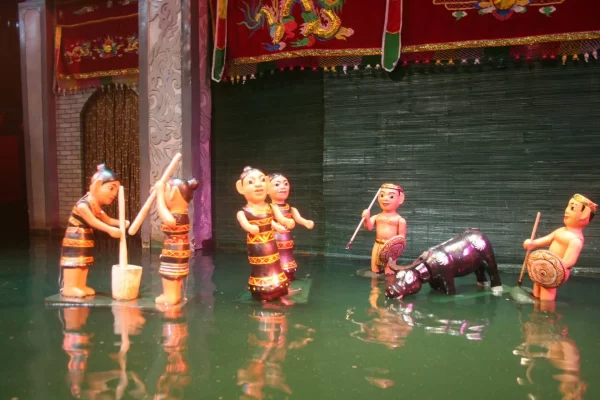
Water Puppet Show
The Water Puppet Show in Hanoi dates back to the 11th century and originated in the Red River Delta of northern Vietnam. It started as a form of entertainment for villagers during the rice harvesting season and has since evolved into a traditional art form depicting Vietnamese folklore and daily life.
While several venues offer Water Puppet performances in Hanoi, the Thang Long Water Puppet Theatre is renowned for its authentic shows. Located in the heart of the Old Quarter near Hoan Kiem Lake, it provides a cultural immersion into this unique Vietnamese art form.
2. Cyclo Ride through the Old Quarter
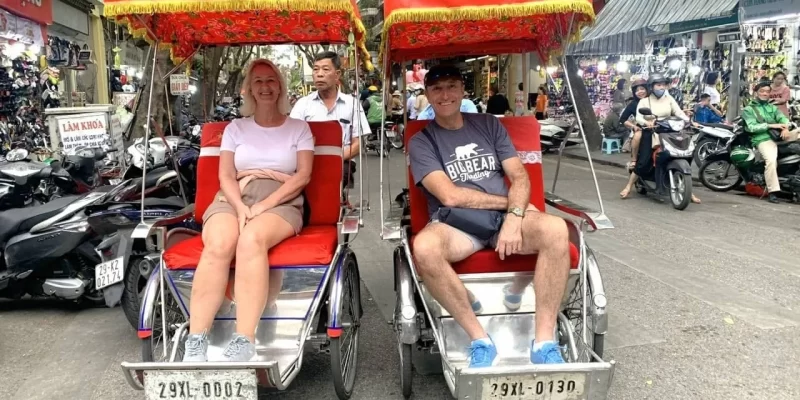
Cyclo is an ideal way to explore Hanoi
Taking a cyclo ride through Hanoi’s Old Quarter offers a nostalgic journey through narrow streets lined with colonial architecture, ancient pagodas, and bustling markets. Cyclos, traditional Vietnamese cycle rickshaws, provide a leisurely pace to explore the vibrant sights and sounds of this historic district. Visitors can expect to interact with friendly local drivers who often double as knowledgeable guides, offering insights into Hanoi’s rich history and culture.
3. Hanoi Cooking Classes
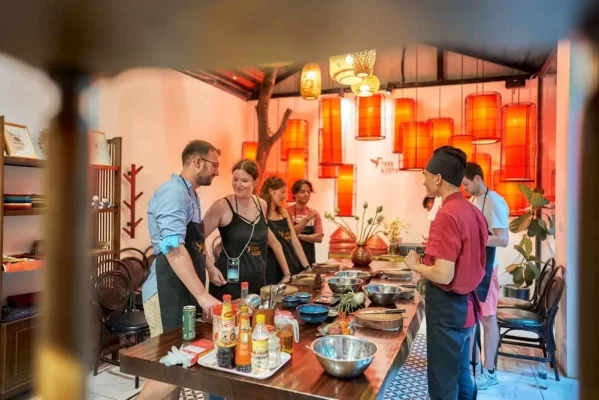
Join a cooking class to experience Hanoi culinary culture
Hanoi cooking classes are a favorite among visitors seeking hands-on experiences with Vietnamese cuisine. Typically held in local homes or cooking schools, these classes offer participants the chance to learn the art of making traditional dishes such as pho (noodle soup), spring rolls, and bun cha (grilled pork with noodles). Experienced chefs guide participants through the entire cooking process, from selecting fresh ingredients at local markets to mastering cooking techniques unique to Vietnamese cuisine.
4. Hanoi Street Food Tours
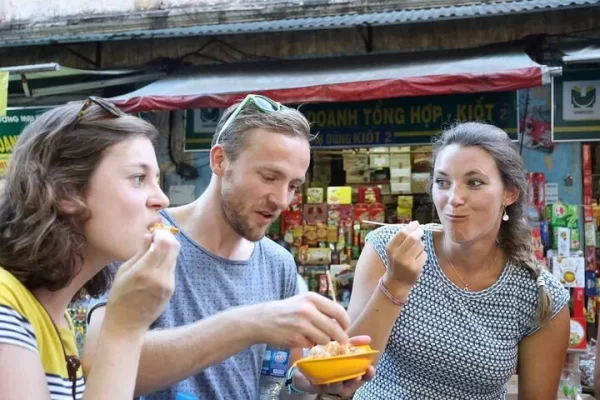
Come and Experience Hanoi Street Food Tours
Taking a street food tour in Hanoi allows you to discover hidden culinary gems that you might miss on your own. These tours are usually led by local guides who know the best spots to sample authentic dishes.
Additionally, guides often share interesting stories and insights about the food’s history and preparation, enhancing the overall experience.
Learn more about: Private Street Food Tour Hanoi by Walking in 3 Hours
5. Hanoi Train Street
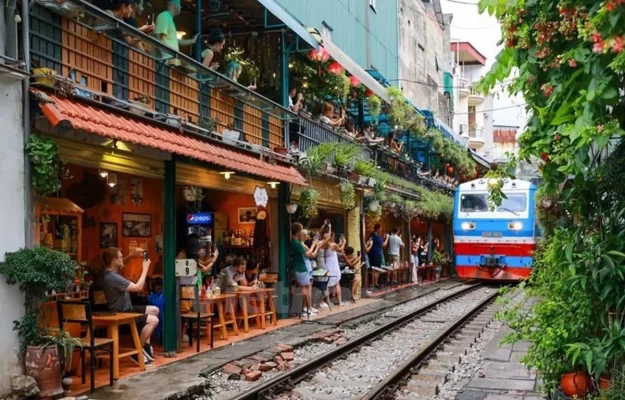
An experience that cannot be found anywhere else in the world
Hanoi Train Street is a captivating and unconventional attraction nestled in the heart of the city. This narrow residential street is famous for its incredibly close encounters with passing trains. The tracks run mere inches away from the doorsteps of the houses, creating a surreal experience as trains thunder through several times a day.
Read more: Best Coffee Shops in Hanoi That You Must Try ASAP
IV. Natural Attractions and Parks
1. West Lake
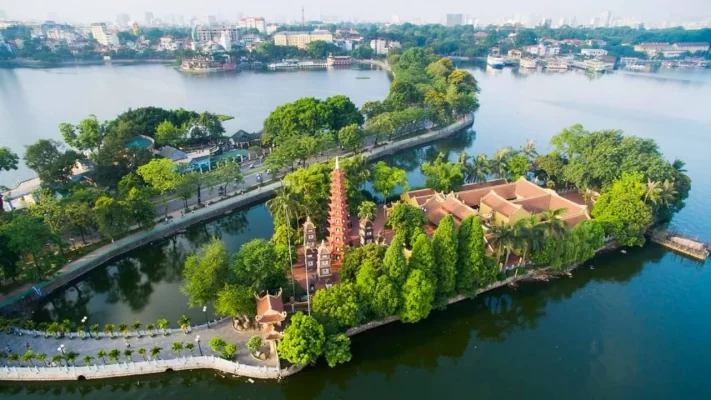
The beauty of West Lake with Tran Quoc Pagoda
West Lake is the largest freshwater lake in Hanoi and a favorite recreational spot for locals and tourists alike. This scenic area offers a refreshing escape from the bustling city center, providing a serene environment for various activities.
Activities:
- Cycling and Walking: The 17-kilometer path around West Lake is perfect for cycling and walking. Rent a bike from one of the many rental shops nearby, or enjoy a leisurely stroll while taking in the beautiful views.
- Boating: Paddleboats and swan boats are available for rent, allowing you to enjoy the tranquility of the lake from the water.
- Cafés and Restaurants: Numerous lakeside cafés and restaurants offer a variety of local and international cuisines, making it a great place to relax and enjoy a meal with a view.
Nearby Attractions:
- Tran Quoc Pagoda: Located on a small island in West Lake, Tran Quoc Pagoda is the oldest Buddhist temple in Hanoi, dating back to the 6th century. It’s a peaceful spot to learn about Vietnamese Buddhism and enjoy the beautiful architecture.
- Quan Thanh Temple: Another historic site near West Lake, Quan Thanh Temple is dedicated to Tran Vu, one of the principal deities in Taoism. The temple features intricate wood and stone carvings and offers a glimpse into Vietnam’s spiritual heritage.
2. Ba Vi National Park
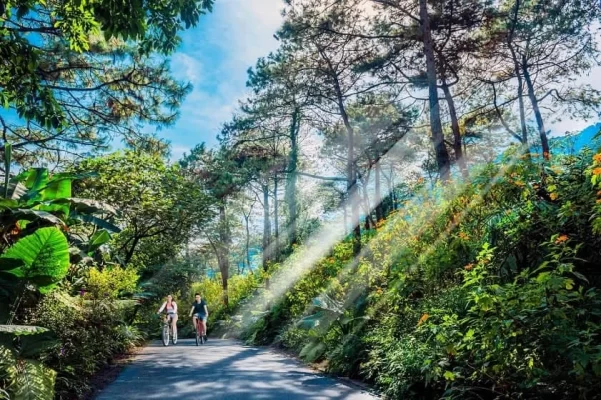
Ba Vi National Park
Ba Vi National Park is a stunning natural reserve located about 60 kilometers west of Hanoi. Known for its rich biodiversity and lush landscapes, Ba Vi is an excellent destination for a day trip from the city.
Activities:
- Hiking: Ba Vi offers several well-marked hiking trails suitable for all levels. The trails lead through dense forests, past waterfalls, and up to scenic viewpoints. The trek to the summit of Tan Vien Mountain is particularly popular, offering breathtaking views.
- Wildlife Watching: The park is home to a variety of wildlife, including rare birds and mammals. Birdwatchers will particularly enjoy the diverse avian species found in the area.
- Camping: For those who wish to extend their stay, camping is allowed in designated areas. It’s a great way to experience the park’s natural beauty overnight.
V. Things to Do in Hanoi at Night
1. Ta Hien Street (Beer Street)
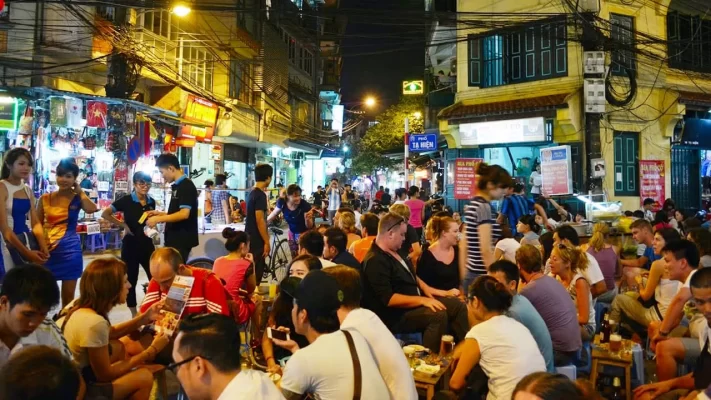
Ta Hien Street
Often referred to as “Beer Street,” Ta Hien Street is a lively area in the heart of the Old Quarter. It’s the perfect spot for those looking to experience Hanoi’s energetic nightlife scene.
2. Hanoi Night Clubs

1900 Le Theatre
- 1900 Le Theatre is one of Hanoi’s most popular nightclubs, located in the heart of the Old Quarter. Known for its impressive sound system and lively DJ sets,.
- The Bank Hanoi: Situated on the 6th floor of a high-rise building, The Bank offers stunning views of the city and a spacious dance floor.
- Hero Club is known for its industrial-chic decor and high-energy vibe. It’s a favorite among both locals and expats.
3. Rooftop Bars
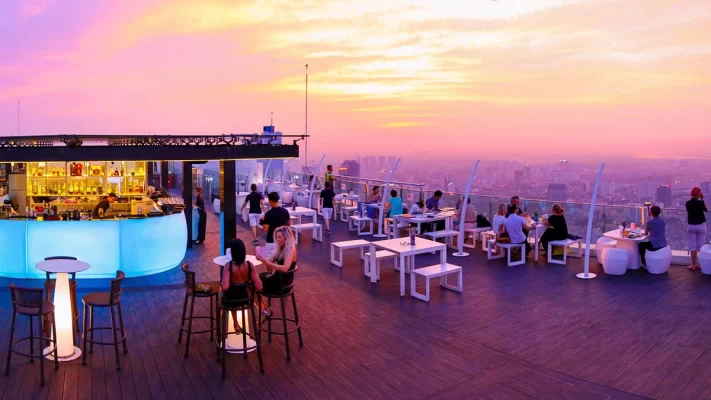
Top of Hanoi
For breathtaking views of Hanoi’s skyline, head to one of the city’s rooftop bars. These venues offer a sophisticated atmosphere and are perfect for a relaxed evening with friends or a romantic night out.
Best Rooftop Bars:
- Top of Hanoi: Located on the 65th floor of the Lotte Hotel, this bar offers panoramic views of the city. The perfect spot for a sunset cocktail.
- Skyline Hanoi: Situated in the Old Quarter, this bar provides stunning views of Hoan Kiem Lake and the Red River.
- Diamond Sky Bar: Known for its stylish decor and extensive cocktail menu, this bar offers a 360-degree view of Hanoi.
4. Hanoi Night Markets
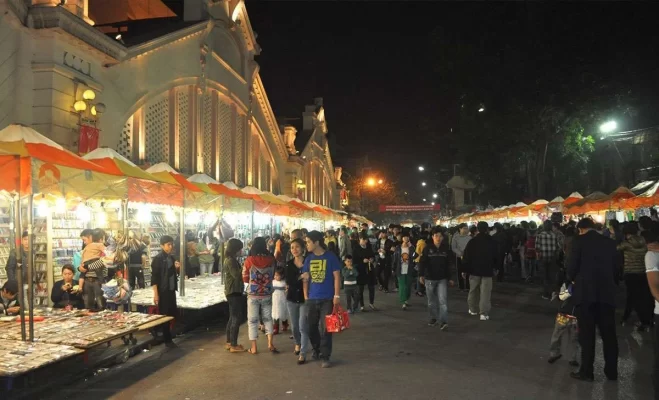
Dong Xuan Night Market
Hanoi’s night markets are a feast for the senses, offering a mix of shopping, food, and entertainment. Night markets in Hanoi are not just places to shop; they are bustling hubs of social activity where locals and tourists mingle. These markets offer a glimpse into the daily lives of Hanoians, showcasing local crafts, food, and entertainment.
Must-Visit Markets:
- Hanoi Night Market: Located in the Old Quarter, this market is open from Friday to Sunday. It’s a great place to shop for souvenirs, try local street food, and enjoy live performances.
- Dong Xuan Night Market: Another popular spot for night shopping. It offers a wide range of goods, from clothes to handicrafts.
VI. Day Trips from Hanoi
1. Ha Long Bay

You can experience 1 day with a cruise in Ha Long Bay
Ha Long Bay, a UNESCO World Heritage Site in Vietnam located approximately 170 kilometers east of Hanoi, is renowned for its stunning limestone karsts and emerald waters. This natural marvel attracts travelers from around the globe seeking breathtaking landscapes and cultural insights.
Activities:
- Cruise Excursions: Explore the bay aboard traditional wooden junks, passing through towering karst formations and hidden caves.
- Kayaking: Paddle through tranquil waters to secluded lagoons and pristine beaches.
- Visit Floating Villages: Witness local life on the water and learn about traditional fishing practices.
- Caving: Discover mystical caves like Thien Cung Cave with its spectacular stalactites and stalagmites.
2. Bat Trang Pottery Village
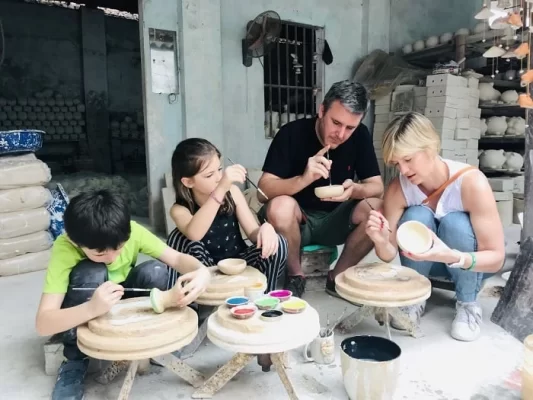
Tourist experience at Bat Trang Pottery Village
Located just a short drive (about 13 kilometers) southeast of Hanoi, Bat Trang is Vietnam’s most famous pottery village. Renowned for its centuries-old tradition of ceramic craftsmanship, Bat Trang offers a glimpse into Vietnam’s artisanal heritage.
Activities:
- Pottery Workshops: Participate in hands-on sessions to create your own ceramic pieces under the guidance of skilled artisans.
- Shopping: Browse a wide array of ceramics, from decorative items to functional kitchenware, available at local workshops and markets.
- Cultural Immersion: Visit family-run kilns and gain insight into the intricate pottery-making process.
3. Ninh Binh
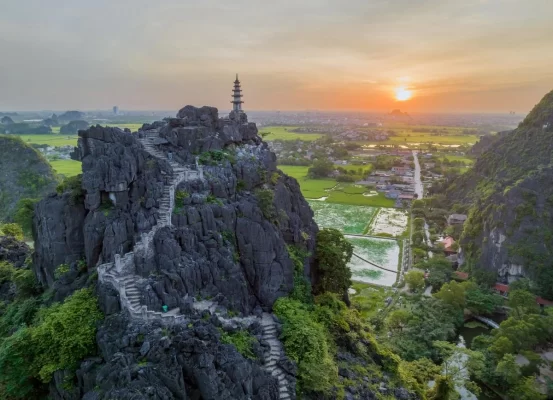
Mua Cave in Ninh Binh
Ninh Binh, often referred to as “Ha Long Bay on land,” is a picturesque province located approximately 100 kilometers south of Hanoi. This region captivates visitors with its lush landscapes, limestone cliffs, and ancient temples.
Activities:
- Boat Tours: Glide along serene waterways flanked by towering limestone peaks, passing through caves and verdant rice paddies.
- Visit Hoa Lu Ancient Capital: Explore the historic capital of Vietnam in the 10th and 11th centuries, featuring ancient temples and royal palaces.
- Biking and Hiking: Cycle or hike through rural villages and karst formations for a closer look at local life and stunning scenery.
In conclusion, Hanoi offers a captivating blend of rich history, vibrant culture, and memorable experiences for every traveler. From exploring ancient temples and wandering through the bustling Old Quarter to savoring delectable street food and enjoying traditional water puppet shows, Hanoi promises a journey filled with discovery and charm.
Whether you’re fascinated by history, intrigued by art, or simply eager to immerse yourself in the local lifestyle, Hanoi’s diverse attractions and warm hospitality ensure an unforgettable visit. Plan your adventure today and uncover the treasures of this dynamic city.
See more: Hanoi travel tips



